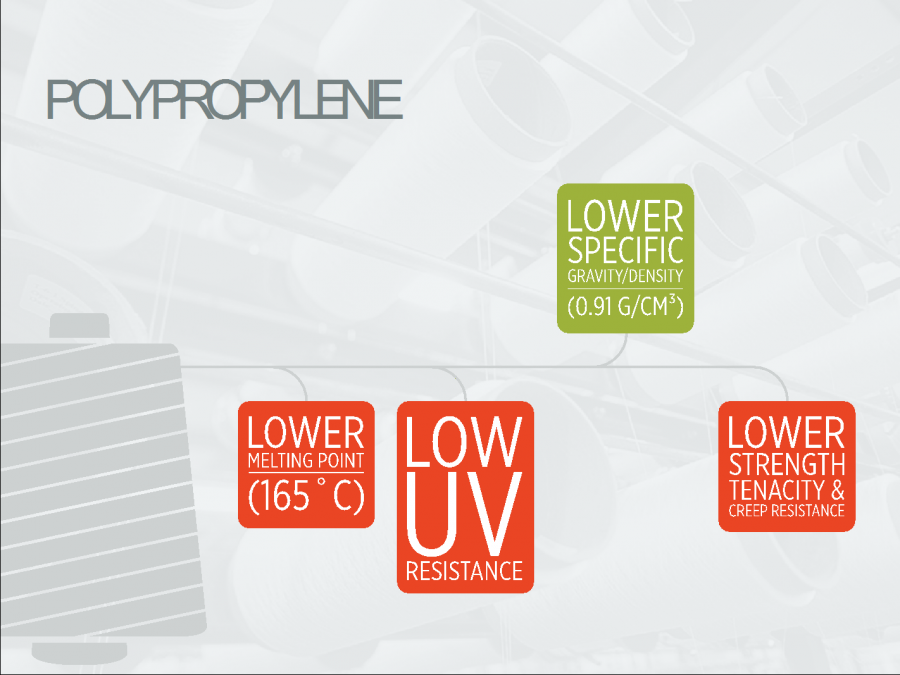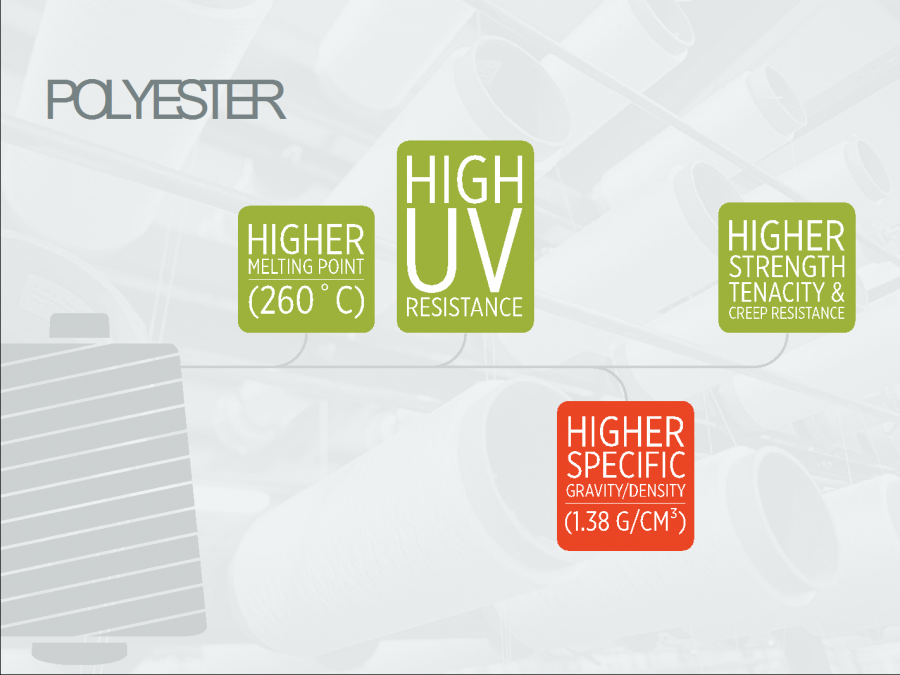
Should you be using a polypropylene or polyester sewing thread? We compare these two different materials to help you decide.
Polypropylene

Polypropylene - Advantages:
- Lower specific gravity/density (0.91 g/cm³) – More fibers/unit weight (~25% more).
- More hydrophobic – absorbs less water and therefore dries faster.
- Lower heat transfer – Retains more heat.
- Inert to most chemicals.
Polypropylene – Disadvantages:
- Lower Melting Point 165 degrees C.
- Lower UV resistance – needs additives like Carbon Black to prevent rapid deterioration with UV exposure.
- Lower Strength – requires larger thread or yarn to meet strength targets.
- Lower creep resistance and higher elongation.
- Poor abrasion resistance.
- Not suitable for high speed sewing applications.
Polyester

Polyester Advantages:
- Higher strength, tenacity and creep resistance – distinct advantage in Geotextiles and especially when load is on a fabric.
- Greater yield per pound.
- Higher melting point (260°C vs 165°C).
- Withstands high temperature washing and drying.
- More UV resistant - Retains strength and color better.
- Resistant to most chemicals.
- Has good flame resistance and flame retardant properties.
- Has good abrasion resistance.
- Polyester is used more for sewing – Higher strength and can withstand high temperatures generated during the sewing process (up to 350°C).
- Polyester produces a better all-around fabric and sewing thread.
Polyester Disadvantages:
- Higher specific gravity.
- Less hydrophobic, requires additives or coating to prevent wicking.
- Susceptible to damage if exposed to highly alkaline chemicals.
Polyester has become the predominant material for all textiles over the past ten years, with an estimated 75 percent adoption rate in textiles worldwide. As the use of polyester has increased, the capacity for production has exploded, especially in Asia – the worldwide capacity in was estimated to be more than 59 million tons in 2012 – a 30 percent increase over the capacity in 2011. This increased capacity has driven the cost down for “raw” polyester to a competitive rate with PP, making polyester worth exploring as the new material of choice for many applications:

Service Thread processes and builds engineered yarns using polyester and polypropylene.
Get a Sample or Schedule a Service Call
Our engineers are happy to help you determine the best type for your application.



